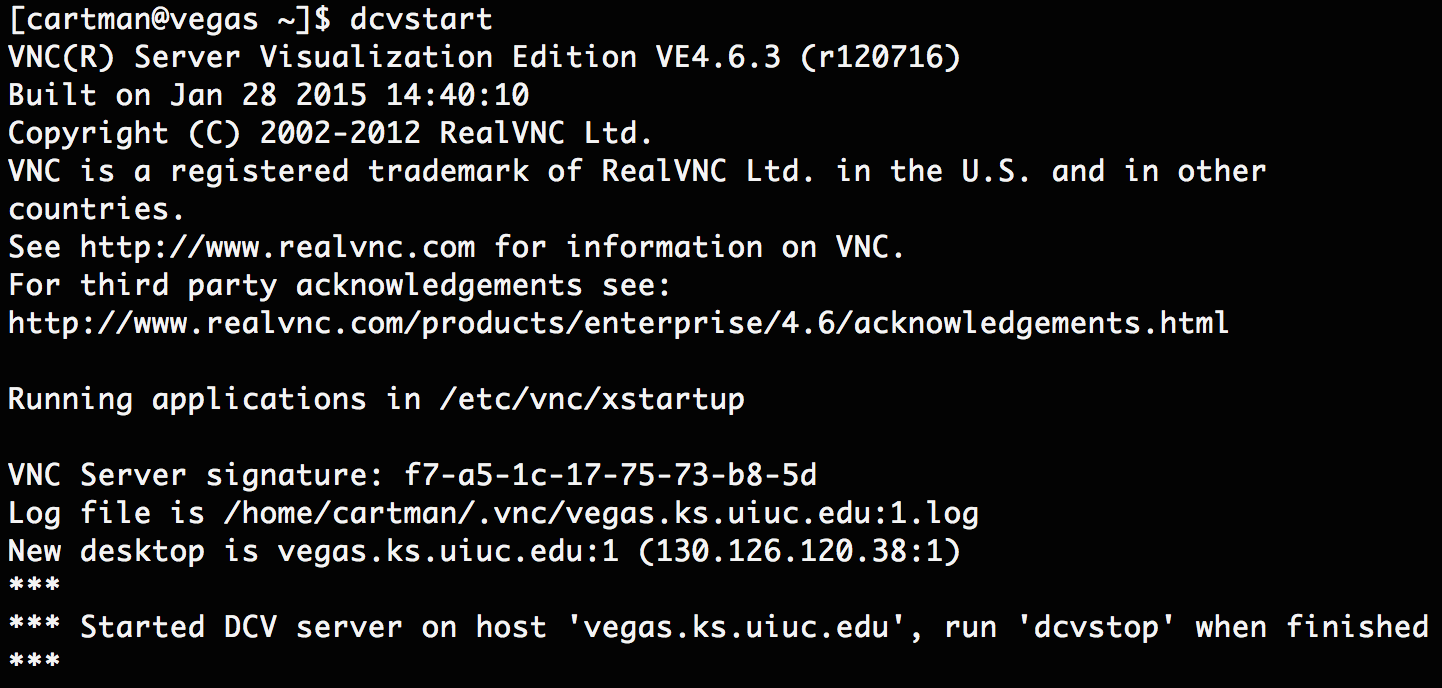



Next: Connect to a Remote
Up: TCBG Resources for Remote
Previous: Check Resource Availability
Contents
Remote visualization sessions may be run in single- or multi-user modes.
Single-User Session
Single-user sessions allow private access to remote visualization machines.
Only the user who initiates a session may connect (session owner), and no additional users may be subsequently added to the session.
Use this type of session to work individually.
To initiate a single-user session, log on to a vacant remote visualization machine and enter the following command:
$ dcvstart
Multi-User (Collaborative) Session
Collaborative sessions allow multiple users to access a remote visualization machine, where they interact within a single shared session.
One user initiates the session (session owner), and additional users may connect directly.
Guest connections with view-only access are allowed with approval from the session owner.
Use this type of session to work in a group, or with collaborators.
To initiate a collaborative session, the session owner logs on to a vacant remote visualization machine and enters the following command:
$ dcvstartcollab
Figure 2:
Initiate a session with dcvstart or dcvstartcollab.
|
|




Next: Connect to a Remote
Up: TCBG Resources for Remote
Previous: Check Resource Availability
Contents
www.ks.uiuc.edu/Training/Tutorials
